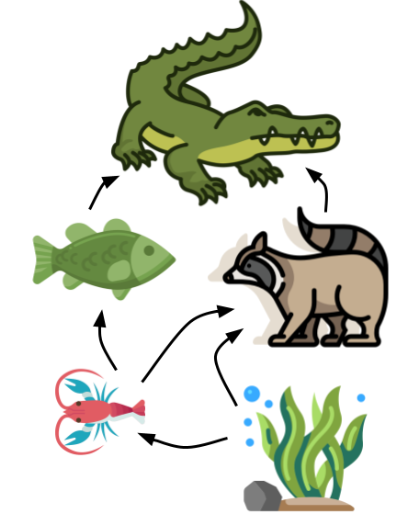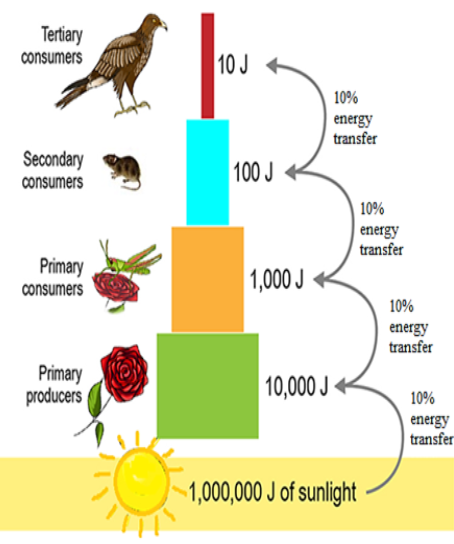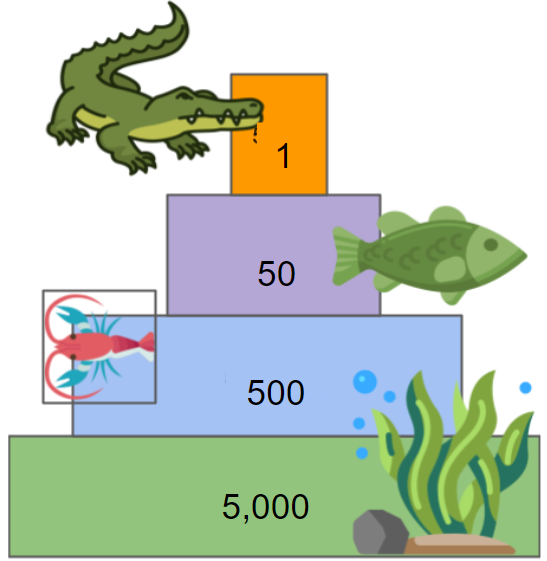Chapter 4 - Ecosystems
Case Study - What's to blame for the bloom?
Autotrophs (Primary Producers) - use photosynthesis to capture energy from the sun; some bacteria use chemosynthesis
Photosynthesis

Glucose (sugar) is used for energy to grow and maintain life
Heterotrophs (Consumers) - gain energy by eating other organisms
- Carnivores - eat other animals
- Herbivores - eat plants
- Omnivores - eat animals and plants
- Detritivores - eat decaying plants and animals
4.2 Energy Flow in Ecosystems
Food chain - shows hopw energy moves in an ecosystem
Food web - contains many chains showing interactions

- What eats a large mouth bass?
- What does the bass eat?
- Which animal is an omnivore?
- Does this web represent all the organisms in the lake?
Ecological Pyramids - models that show amount of energy or matter at each level in a chain
Trophic level - a step in the food chain

Primary Consumers - eat plants
Secondary Consumers - eat primary consumers
Energy is lost as heat as you move up the chain. An ecosystem can support more primary consumers, that secondary consumers. *This is why in a prairie, there will be many mouse, but only a few hawks.
Pyramid of numbers - displays the number of individuals at each trophic level (generally more herbivores than carnivores)
Sometimes the pyramid is inverted. Example, ONE tree might support several primary consumers.

Pyramid of Biomass - shows the weight at each level; plants have more mass than animals
4.3 Cycles of Matter
Biogeochemical cycles - matter is reused in a system
Water Cycle - (condensation, precipitation, transpiration, evaporation
Carbon Cycle - carbon enters the atmosphere from animal waste, decomposition, and burning fossil fuels
Nitrogen Cycle - 78% of the air is nitrogen; N is converted to useable forms by bacteria